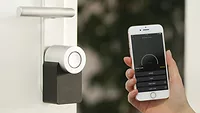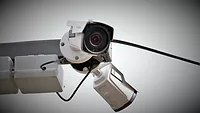Education & Training
Maximizing security in repurposed spaces

via Getty Images

Ken Poole is a Senior Director at Johnson Controls. He has over 20 years of experience in the security industry leading teams that deliver secure, resilient, and data-powered building environments every day.
Photo courtesy of Poole
From hospitals converting storage areas into patient rooms to office buildings reconfiguring cubicles to promote social distancing, it is clear that as our needs and challenges change, so must our building environments. One of the biggest facility management takeaways from the COVID-19 pandemic has been the need for flexibility within building infrastructures. Businesses and organizations around the country and across industries have had to reassess how they are using their spaces in order to maximize efficiency and safety.
From a security standpoint, effectively and quickly converting a building space is no easy task. Chief security officers (CSOs) and other security leaders must thoughtfully implement solutions and strategies that will not only safeguard buildings from traditional intruder threats, but also promote a healthy environment for employees and occupants. The COVID-19 pandemic has sparked a unique convergence of security and health, and it’s up to CSOs to keep up and even drive that transformation for their organizations.
Frictionless Access Control for Seamless Space Conversion
When converting spaces to meet an enterprise’s changing needs, it’s critical to get new security systems up and running as quickly as possible to avoid disrupting day-to-day operations. These security systems not only allow businesses to start using the space per its new function, but also ensure ongoing maintenance and monitoring of its health and security state.
One of the most important solutions that we’ve seen transform a space is access controls. As the purpose of a room or even an entire building floor changes, so must its access authorization requirements, making a space’s operability entirely dependent on its security installations. By installing digital access controls, security teams can quickly adjust who is permitted to enter an area of the building as necessary, ensuring no intruders are able to slip through the cracks during times of transition.
The healthcare industry has especially benefited from these implementations, allowing hospitals to quickly minimize access to floors hosting COVID-19 patients to select staff members. When working with a hospital in the early days of the pandemic, one of our teams was able to implement a new security system within six days, allowing the new intensive care unit (ICU) to accept patients within 10 days. This swift turnaround and enhanced security meant the hospital was ready to handle the influx of caseloads and provide exemplary patient care.
To balance security with the growing need for sterile best practices, enterprises can implement frictionless access control capabilities, such as AI-powered facial recognition. Authorized personnel can enter converted spaces hands-free, without risking contamination by touching keypads or badges. As a result, enterprises can confidently make space utilization changes knowing the health and security of their occupants won’t be compromised.
AI-Powered Virtual Security Operation Centers
With many businesses striving for minimal building occupation to maintain social distancing, CSOs are challenged to monitor these spaces with far less staff actually onsite. To fully optimize their space utilization strategies, security leaders can invest in virtual security operation centers (SOCs) that can be remotely operated and monitored by a third-party provider. These centers integrate previously disparate systems onto a single network, automating every data touchpoint to streamline operations and maximize security. As a result, buildings are smarter, safer and able to keep up with rapid changes.
For instance, food processing plants have struggled to continue safe operations during the pandemic while keeping facilities minimally occupied. Remote virtual security operation centers allow them to monitor safety and quality processes without having to be onsite, allowing production to continue undisrupted.
With virtual monitoring, spaces can easily be added onto a network for maximum security as they are repurposed, allowing businesses to adjust their buildings’ space utilization as needed without compromising security. Some of those pieces that make up a comprehensive strategy that leverages advanced monitoring solutions, include:
- Video surveillance: With building spaces being used for new purposes and accessed by different personnel, having the ability to visually monitor ongoing operations is critical, especially when the space is utilized for sensitive healthcare purposes. Video surveillance allows remote security teams to monitor buildings for potential intruders and provides CSOs with the insights needed to ensure a space is being safely maintained even when the building is minimally occupied.
- Smart elevated skin temperature scanning: Manually screening employees for elevated temperatures can create traffic bottlenecks, potentially reducing social distancing and exacerbating the risk of exposure. By integrating thermal imaging cameras, large groups of individuals can be screened for elevated temperatures without disrupting the flow of traffic, minimizing the risk of accidental infection. For optimal accuracy, it’s critical to ensure that whichever thermal camera is implemented meets or exceeds the standards set by the International Electrotechnical Commission (IEC).
- Social-distance monitoring and contact tracing: Many businesses’ reopening plans are dependent on strict social-distancing compliance, which can be difficult to monitor while keeping buildings minimally occupied. Leveraging Bluetooth technology, artificial intelligence (AI) systems can analyze employees’ locations within a building to recognize when they have interacted within six feet of each other for an extended period of time and can even send reminders to mobile devices to socially distance. Should an employee exhibit COVID-19 symptoms, this same technology can be used to identify which individuals have been in close contact with them and should therefore quarantine or take other precautionary measures.
- Mask detection: Properly enforcing mask best practices is crucial to maintaining overall building health and to providing occupants with peace of mind. By combining video surveillance with AI capabilities, individuals lacking proper mask protection can be instantly flagged to security for swift follow-up.
Maintaining Infrastructure Flexibility for Seamless Operations
As we learn more about the COVID-19 virus, and as the pandemic continues to evolve in its scope and impact, businesses across all industries need to remain agile in their health and security strategies. By empowering CSOs with the tools they need to rapidly repurpose building spaces while maintaining the health and security of their facility environments, organizations can continue to operate safely and efficiently.
We don’t know what the future will bring, but through strategic space repurposing and technology adoption, we can lay the foundation for a flexible infrastructure to tackle a myriad of challenges head on without compromising security.
Looking for a reprint of this article?
From high-res PDFs to custom plaques, order your copy today!






